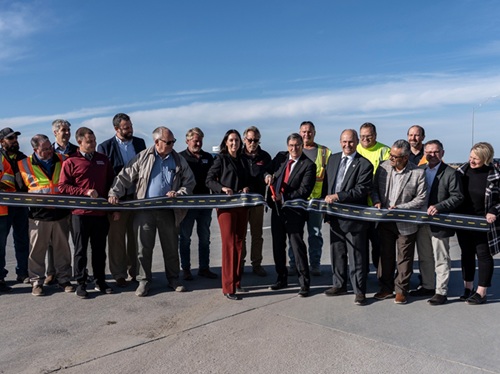The Alaska Department of Transportation & Public Facilities recently launched the Alaska Rural Remote Operations Work Plan or ARROW program, which uses drones to greatly improve emergency response capabilities in rural Alaskan communities.
[Above photo by Skydio]
The agency said that using drones – formally known as Uncrewed Aerial Systems or UAS – linked to a shared geographic information system will help speed up response times to natural and man-made disasters, protecting critical infrastructure and ensuring the safety of residents in these remote areas. Skydio, a U.S.-based drone manufacturer, is supplying the drones for this program.
Alaska DOT&PF noted its new ARROW program – funded in part by a grant awarded through the U.S. Department of Transportation’s Strengthening Mobility and Revolutionizing Transportation or SMART program in March – leverages a strategic partnership between the Federal Aviation Administration’s BEYOND Program and Alaska Center for UAS Integration, allowing the agency and its community partners to operate drones beyond visual line of sight (BVLOS) to conduct infrastructure inspections.
“UAS technology will ensure that emergency responders are dispatched quickly to protect critical infrastructure and potentially save lives following a disaster in rural Alaska,” said Governor Mike Dunleavy (R) in a statement.
“We have consistently seen the positive impact drone technology can have on public safety and critical infrastructure resilience, especially in remote, hard-to-reach areas,” said Adam Bry, Skydio’s CEO. “We look forward to partnering with them [Alaska DOT&PF] to support the Alaska Rural Remote Operations Work Plan.”
Many state departments of transportation are using drones in a variety of capacities, from structural mapping and bridge inspections to aiding in highway incident response and cargo deliveries.
For example, the Indiana Department of Transportation recently helped the Indiana Department of Natural Resources “map” a historic water-powered grist mill using drones – prior to the structure’s renovation later this fall.
Meanwhile, in the Iowa City area, the Iowa Department of Transportation is working with its “Highway Helper” contractor, Autobase, to test the use of drones to help clear highway incidents faster so traffic can get moving normally again.
The North Carolina Department of Transportation is doing something similar. In February 2022, the agency began testing a “tethered drone” system in conjunction with the agency’s highway patrol service to improve safety on North Carolina roadways.
On a different track, the aeronautics division of the Massachusetts Department of Transportation recently began working with drone provider Skyports to demonstrate how drone services could link communities across the Cape Cod region.
MassDOT said it is investigating the use of drones as a solution to connecting its remote communities to everyday services such as healthcare and logistics, and in particular is looking to develop a capability to provide emergency medical delivery after storms or other natural disasters.
 States
States
Kris Strickler to Step Down as Oregon DOT Director
November 14, 2025 States
States

